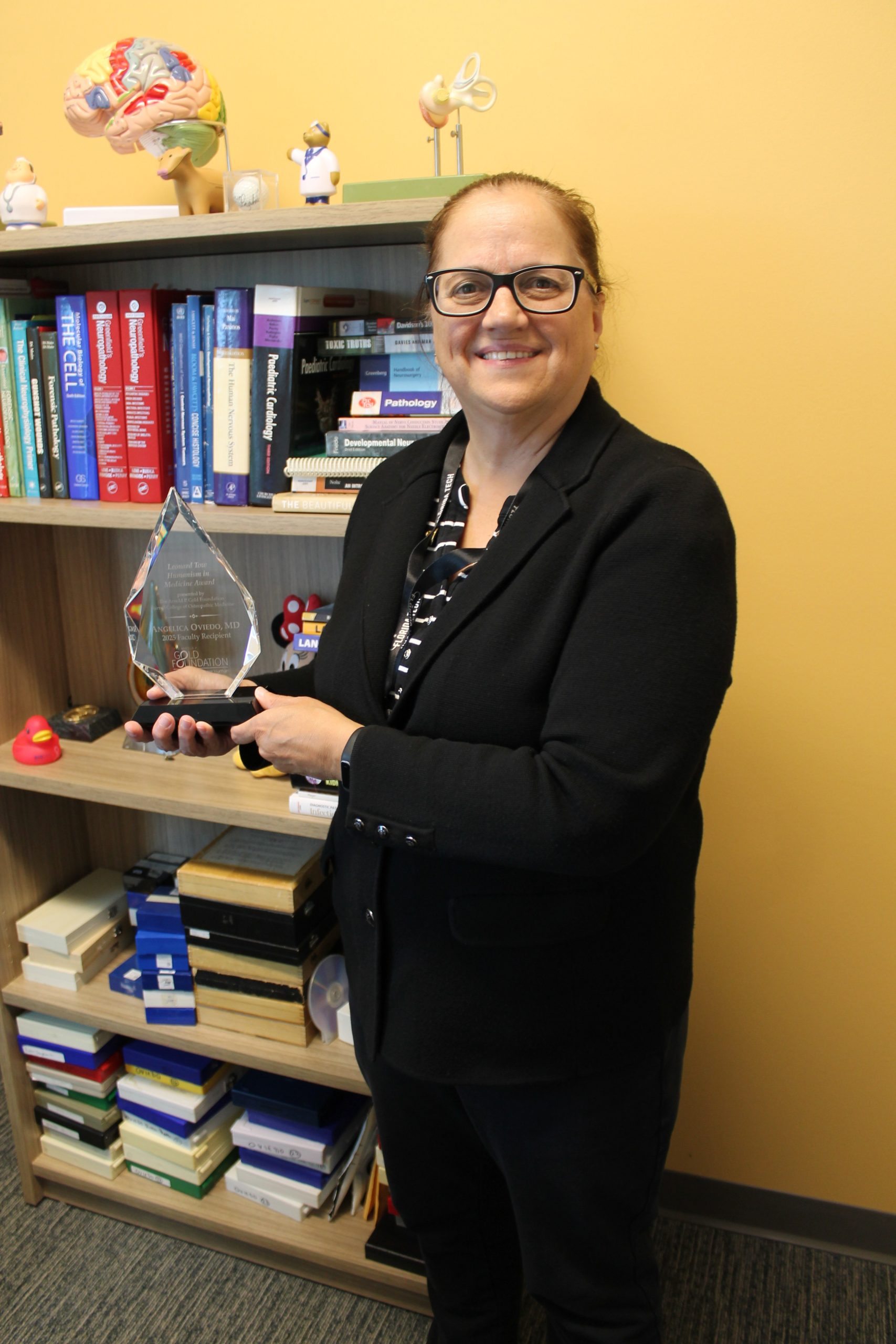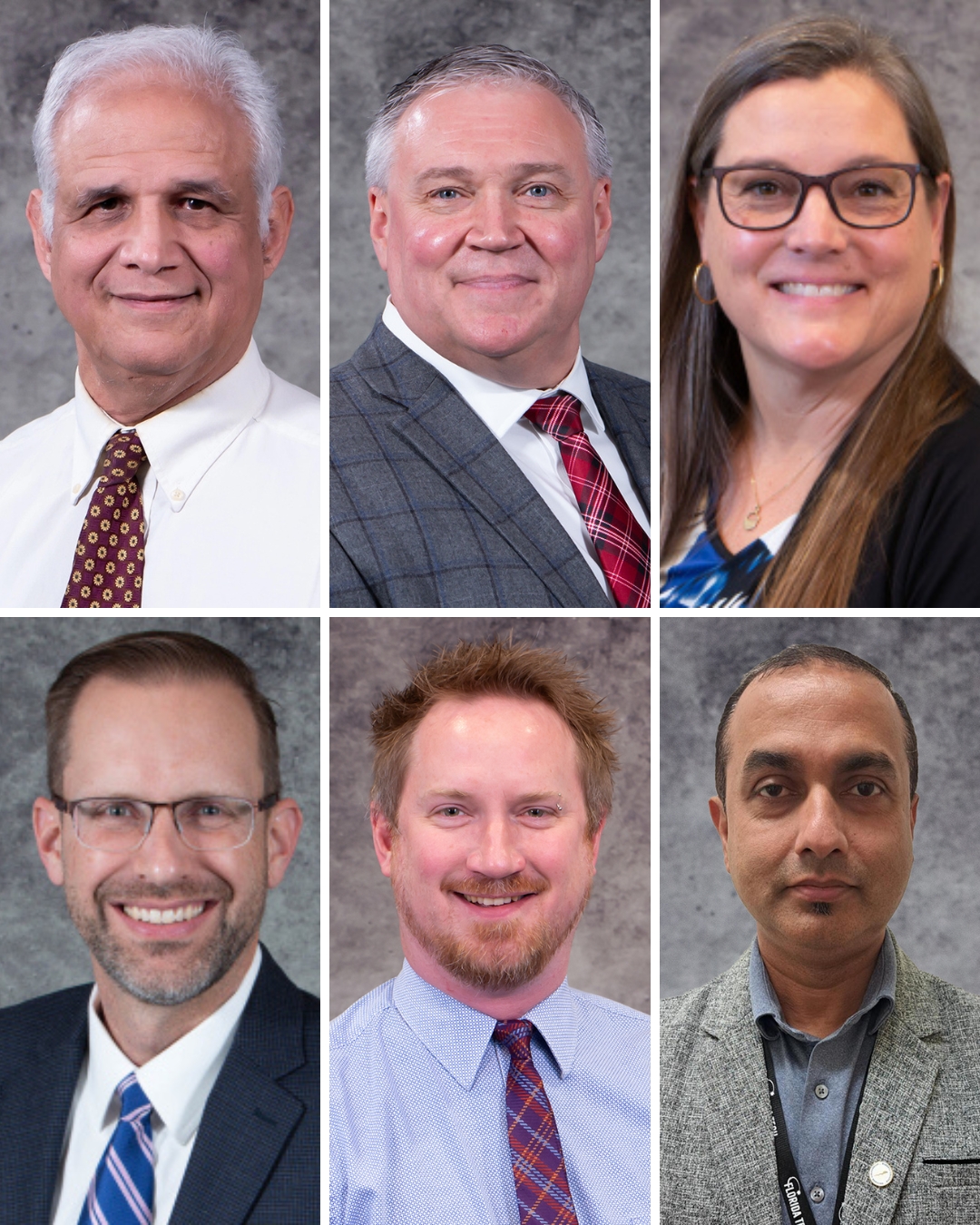
As BCOM’s class of 2020 prepares to head out to health clinics and hospitals all over the region for their third year clinical clerkships, they will be prepared for many of the challenges thrown their way thanks in large part to the time they’ve spent learning in the college’s Simulation Lab.
“The SIM Lab is here to train and prepare the medical students for any event they may come across with any type of patient,” explains BCOM’s Director of Simulation Sam Gutierrez, who oversees the lab along with his “right hand,” SIM Technician Jennifer Snider.
Gutierrez is a native of La Luz, New Mexico. He received his commission at New Mexico Military Institute and his degree at NMSU, then went on to active duty in the U.S. Army where he served with the 75th Ranger Regiment, eventually serving as an Executive officer of the 3rd Battalion. He also worked on war gaming scenarios at Command and General Staff College in Fort Leavenworth, Kansas. He retired after 20 years of service and started a new career as a flight paramedic, then went on to earn a master’s degree in health care management. Before coming to BCOM, he helped develop the simulation lab at Texas Tech Paul L. Foster School of Medicine in El Paso.
“After I retired from Paul L. Foster, I heard they were starting a medical school in Las Cruces. I sent an email and the dean got in touch with me,” Gutierrez explained. “I’ve been here from the ground level and had tremendous input into the simulation lab, which we’re hoping to get nationally and internationally accredited.”
These days, Gutierrez spends his time working directly with medical students on some of the procedures they’ll use most in their careers as physicians. Some of the skills students learn in the lab include endotracheal intubation to include using the glidescope, IV therapy, breast exams, prostate and testicular exams, nasogastric tube, use of the oto and ophthalmoscope, and suturing.


“Every other Friday we host a skills event,” Gutierrez adds. “We put out all the manikins so we they can keep training and become more proficient in skills like suturing and gastro tube insertions.”
All this learning is done with the help of hi-tech teaching tools. The SIM Lab is home to a total of seven hi-fidelity manikins including a newborn, a child, adult males and females, and a pregnant adult female who gives birth. The manikins all talk, blink, perform nearly all bodily functions, and can be programmed to manifest any number of ailments and conditions. Other training tools in the lab include intubation heads, IV arms, and lumbar puncture manikins. Gutierrez personally handcrafts the models used for practicing sutures using different types of silicone to construct muscle, fatty tissue, and the dermal skin layer.
BCOM has more hi-fidelity manikins than the typical medical college and the students learn and practice many skills in their first two years that other school’s don’t teach until the third year. “I’m very pleased that they are learning so much so early,” Gutierrez said. “Our students will be confident and competent when they leave for clinical rotations this summer.”
Gutierrez hopes that teaching future physicians is just the beginning for BCOM’s SIM Lab. He’s already worked with students from NMSU’s School of Nursing and the Dona Ana Community College paramedic program, and he’d like to eventually turn the lab into the Burrell College Regional Training Center, catering to numerous health professional training programs throughout the region. In the end, Gutierrez pointed out, it’s all about the students.
“My favorite part of the job is working with the students,” he said. “Having them ask questions about certain skills that I can help them with is what it’s all about. When I can see they’ve accomplished a goal of gaining competency in a skill—and I see them getting better each time—it make me feel good. Who knows, I may well be under that physician’s care one day, so I like knowing they are trained well.”









